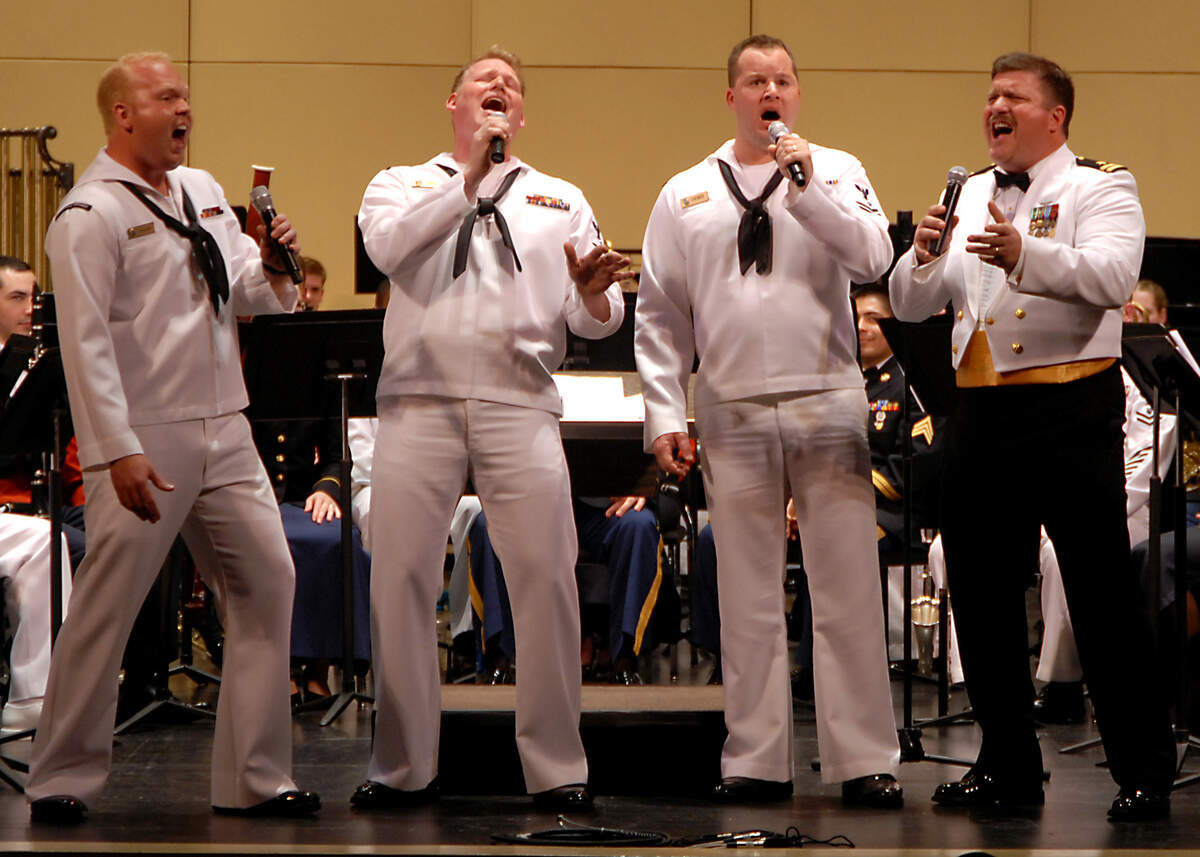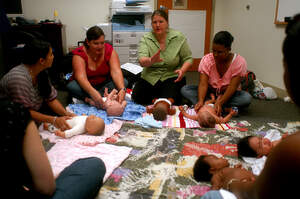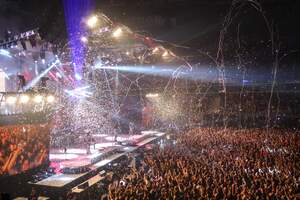

Barbershop Quartet Day
On April 11, 1938, a group of men met in Tulsa, Oklahoma, and started what would become the Society for the Preservation and Encouragement of Barbershop Quartet Singing in America. Presently, the group promotes barbershop music and barbershop quartets and supports the music's continuance. Since 2004, it has been known as the Barbershop Harmony Society. We not only mark the anniversary of the group's founding today, but we celebrate barbershop vocal harmonies, music, and quartets in general.
By the late 1930s, harmonizing vocalizations were much rarer than they had been in the early twentieth century. Owen Clifton Cash discussed with Rupert Hall about getting some people together for a songfest—where harmonizing vocalizations would abound— in Tulsa. Cash mailed out invitations to 14 people and encouraged those he invited to bring others as well. On April 11, 1938, a group of 26 gathered at the Roof Garden on top of the eleven-story Tulsa Club (now the Tulsa Club Hotel, at the corner of 5th Street and Cincinnati Avenue). They sang and harmonized songs together and in quartets for a few hours.
The group decided to meet at the nearby Hotel Tulsa the following week, apparently because people had complained about the noise the week before. This time 70 people showed up. By the end of the following month, when the Alvin Plaza Hotel became their meeting place, their number was swelling to between 75 and 150 each week. They became the Tulsa #1 Chapter and met at the same location for 37 years. Today there are over 800 chapters and about 38,000 members in the Barbershop Harmony Society. The group holds conventions and contests each year and publishes a bimonthly magazine, The Harmonizer. Being that the group was initially formed by and for men, the Sweet Adelines—now known as Sweet Adelines International—was formed for women. It was created on July 13, 1945, which happens to be Barbershop Music Appreciation Day.
Barbershop is unaccompanied vocal music with four-part chords for each melody note. Male barbershop quartets consist of two tenors, a bass, and a baritone. One singer sings the melody while the other three harmonize. The lead tenor (the second tenor) sings the melody, the first tenor harmonizes above the melody, the bass sings the lowest harmonizing notes, and the baritone completes the chord. Tones make major and minor chords and the "barbershop seventh" chord. The same names are given to the singers in female groups, but the names translate to the second soprano singing lead, the lyric soprano harmonizing above, and the baritone alto and bass contralto finishing out the chord.
The name "barbershop" may come from barbershops historically being social and musical gathering places for men. In barbershop music, almost all parts of songs are sung with all four vocal parts at once, but there sometimes is a deviation from this. Lyrics are clearly presented and melodies are usually simple. Phrases are often repeated as if echoing each other, and tempo and volume often vary throughout and among songs. Barbershop singers are expressive and visual, and their actions reflect the tone of the music. This being the case, sheet music is usually not used in barbershop performances. There not only are barbershop quartets, but there are barbershop choirs as well. Barbershop groups are usually all male or all female, but there also can be mixed ensembles. These began appearing in the late twentieth century.
In the 1880s, African American groups began improvising harmonies with popular songs, folk songs, and spirituals. Barbershop music came out of this, the first being African American singing groups in the South in the late 1800s and early 1900s. Some of the singers in these groups went on to be the originators of jazz. The early African American barbershop singing was copied by white minstrel singers wearing blackface, who parodied African American dialect. Some black minstrel groups performed as well.
White professional quartets soon began singing in the barbershop style and began bringing it into the recording studio. Many of the old racist minstrel songs were sung at this time, but new songs that didn't stereotype blacks also began being written. White European music also influenced the musical style to some extent. An early popular recorded barbershop song, albeit with a musical accompaniment, was "Play That Barbershop Chord" by the American Quartet, released in 1910. Sung by an all-white group, dialect stereotyping African Americans is twice used during pauses in the song. The final chord of the song is a barbershop seventh chord (which the song's title refers to). While these white groups were recorded, black quartets tended to not be, however. Eventually, the music became associated with white music, and its roots in African American music were largely forgotten. In the twenty-first century, the Barbershop Harmony Society preserves and shines light on this history of barbershop. Today we celebrate the anniversary of their founding and the music that they work to preserve.
How to Observe Barbershop Quartet Day
Get your voice warmed up, here are some ways to celebrate the day!
- Listen to barbershop music.
- See a barbershop quartet perform or hire a barbershop quartet to sing at an event.
- Join the Barbershop Harmony Society.
- Start a barbershop quartet.
- If you are a member of the Barbershop Harmony Society, you could sign up to enter a barbershop chorus or quartet contest.
- Explore upcoming barbershop competitions or plan to attend an upcoming Barbershop Harmony Society convention.
- Find your Barbershop Harmony Society district. The district websites have information about events, directories to chapters and quartets, and more. If you don't live in the United States, look for affiliates in your part of the world.
- Explore careers and internships with the Barbershop Harmony Society.
- Pick up some barbershop sheet music and songbooks.
- Download free barbershop sheet music.
- Read the The Harmonizer.
- Go to the Tulsa Club Hotel, the location where the Barbershop Harmony Society first gathered, and make your way up to the roof. Bring three other people with you and do some barbershop singing. Or, hire a barbershop quartet to sing in the lobby of the hotel. If you get questioned, let the hotel know about the holiday, and that you are paying tribute to barbershop quartets and the creation of the Barbershop Harmony Society.
- Read a book about the history of barbershop quartets, such as Four Parts, No Waiting: A Social History of American Barbershop Quartet.
- Explore the Barbershop Harmony Society Archives.
- Watch a documentary or movie about barbershop music, such as American Harmony.





















